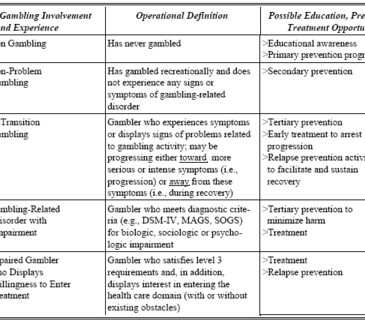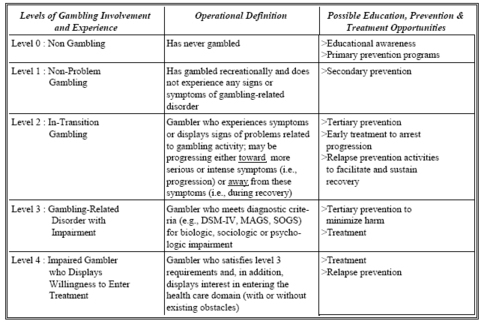A variety of methods currently exist to estimate the prevalence of problem gambling. The South Oaks Gambling Screen (SOGS) and its modifications, the Massachusetts Gambling Screen (MAGS), the American Psychiatric Association’s DSM-IV criteria, the Multifactor Method, and Gambler’s Anonymous 20 questions all can provide estimates of disordered gambling rates. Most instruments allow for classification of individuals into three categories of problem severity. However, there is still considerable conceptual variation among these categories and estimation methods used to define disordered gambling. To facilitate comparison among prevalence rates derived from studies that use different methods and category labels, Shaffer & Hall (in press) propose the implementation of the following new generic multilevel classification scheme. This nomenclature provides both a common language for comparing prevalence rates and conceptual categories capable of guiding the allocation of resources within a comprehensive health care system.
Source: Shaffer, H.J., & Hall, M.N. (in press). Estimating the prevalence of adolescent gambling disorders: a quantitative synthesis and guide toward standard gambling nomenclature. Journal of Gambling Studies.





